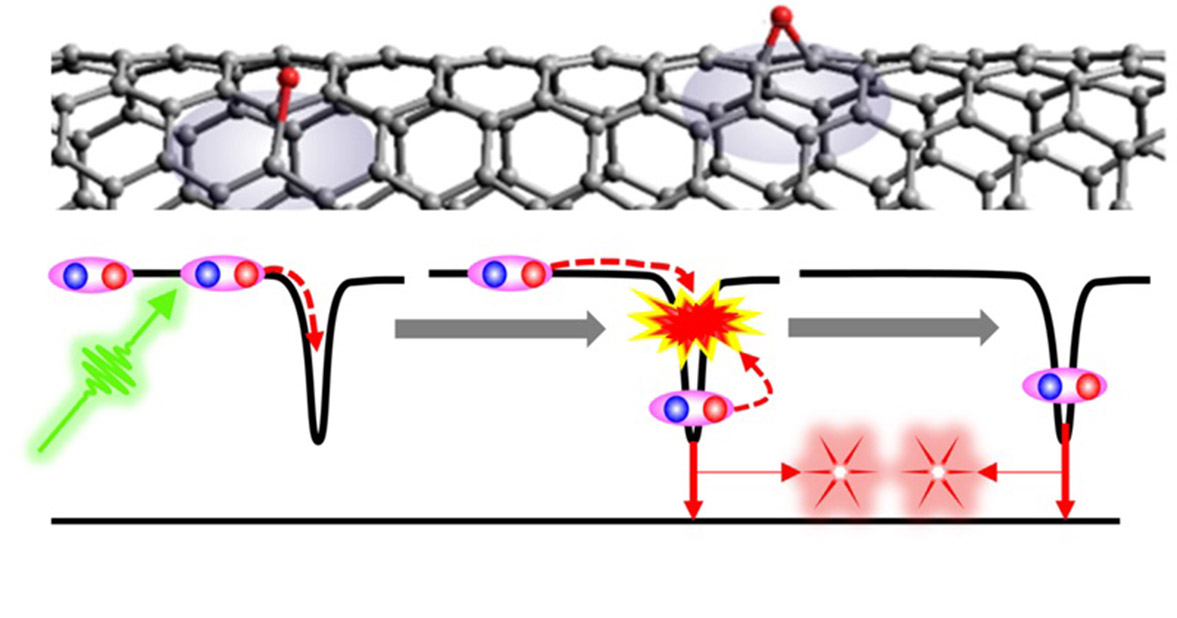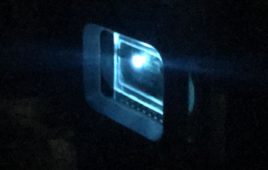Truly secure communications. No eavesdropping. That’s the promise of quantum communication. One challenge to making it a reality is light. We need an efficient way to create packets of light, called photons. Now, scientists have identified how modified carbon nanotubes emit photon pairs. The experiments and theory show that the photon pairs are the result of the capture and recombination of two excitons (electron–hole pairs). The evidence suggests that this is an efficient process for generating photon pairs.
The team’s research shows how to produce photons efficiently using tiny tubes of carbon. Such production could lead to ultra-secure ways to pass messages (quantum communications). The approach could also change lasers, used in everything from consumer electronics to scientific instruments. Of additional appeal is that modifying the carbon nanotubes involves a simple deposition of silicon or aluminum oxide thin films. This makes the tubes compatible with existing microelectronic technologies. It also opens a path to develop photonic integrated circuits.
Tuning the electronic properties of single-walled carbon nanotubes (SWCNTs), a process known as doping, is emerging as an effective means for enhancing the emission properties of these nanotubes and introducing new functionalities. These dopant states of SWCNTs are a new kind of quantum light source that can mimic trapped ions at room temperature. While most dopant states emit one photon per excitation cycle and can therefore serve as single photon emitters, some dopant states emit photons in pairs. There are two ways this could occur: the photon pairs could come from two dopant states located within the laser excitation spot or from successive recombination of two excitons in a single defect. This latest research from scientists at the Center for Integrated Nanotechnologies and their collaborators at Los Alamos National Laboratory identifies the latter process as the responsible party and further clarifies the details of the process.

In a carbon nanotube (top, gray cylinder), the capture of a photon (green arrow) generates two excitons (blue and red spheres bound together) at oxygen doping sites (top, red balls). The excitons recombine and emit photon pairs (bottom, pink stars). Image: Courtesy of Han Htoon, Center for Integrated Nanotechnologies. Reproduced by permission of the Royal Society of Chemistry.
The researchers performed a time-gated second-order photon correlation experiment to separate photons emitted from the fast decays of multi-exciton states and those emitted from the slow decay associated with single exciton states. The experiment showed that the photon pair emission originates from two successive captures and recombinations of excitons at a solitary oxygen dopant state. Further experimental evidence and theoretical analysis showed that this type of photon pair emission process can happen at an efficiency as high as 44 percent of the single photon emission. The main limiting factor for the efficiency of this process is the annihilation of excitons upon collision (exciton-exciton annihilation).
While multi-exciton emission is not desirable for single photon generation, this work opens an exciting new path toward carbon nanotube-based lasers and entangled photon generation. Overall, this work highlights the rich multi-excitonic processes associated with dopant states.
Source: US Department of Energy


